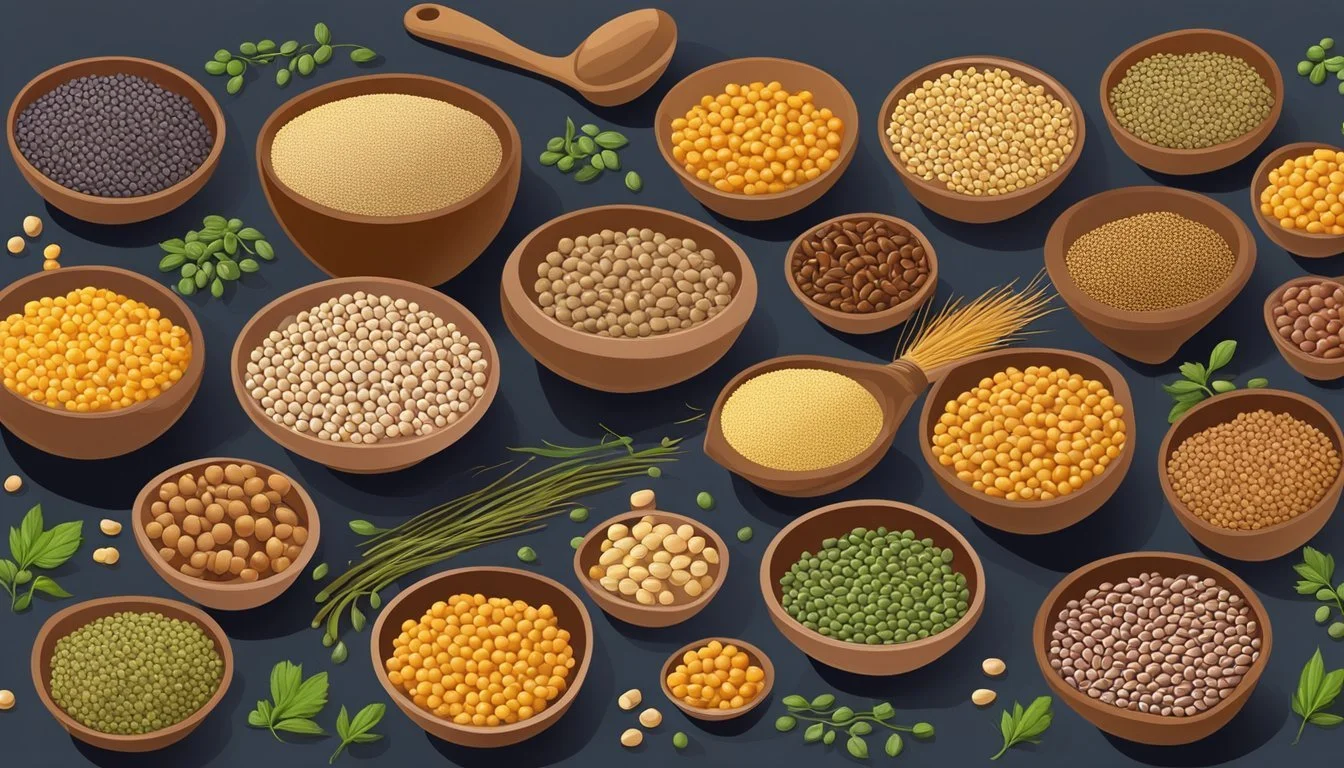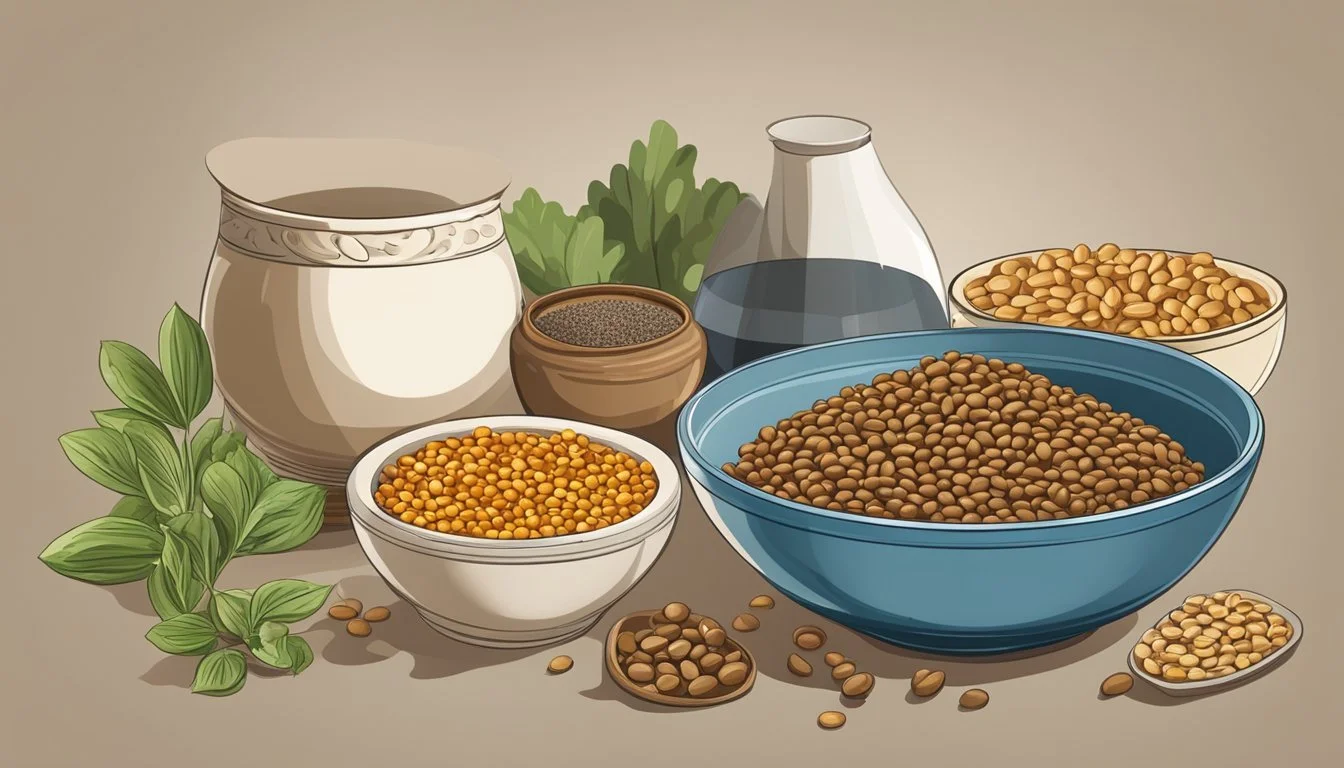Horse Gram Substitutes
Best Alternatives for Your Recipes
Horse gram, also known as Kulthi or Macrotyloma uniflorum, is a legume widely used in Indian cuisine due to its robust, earthy flavor and dense nutritional profile. Rich in protein, calcium, and antioxidants, horse gram is a staple in many households, offering numerous health benefits like aiding in weight management and controlling diabetes. However, for those times when horse gram isn't available, several substitutes can fill in without compromising flavor or nutrition.
Among the most effective substitutes are lentils like channa dal, which matches horse gram's hearty texture and nutritional value. For every pound of horse gram lentil, one can use an equal amount of channa dal, maintaining the dish's integrity. This makes it easy for cooks to create traditional Indian recipes without altering their cherished flavors.
Another noteworthy replacement is black-eyed peas. These beans bring a similar robustness to dishes, and their nutritional benefits, such as high protein and fiber content, make them an excellent horse gram alternative. By offering these viable substitutes, cooks can ensure that the health benefits and flavors of their dishes remain intact, even when horse gram isn't on hand.
Nutritional Profile of Horse Gram
Horse gram boasts a rich nutrient profile, making it a valuable addition to any diet. It is high in protein, essential minerals, and beneficial phytochemicals.
Macronutrients and Minerals
Horse gram is packed with macronutrients like protein, carbohydrates, and fiber.
Nutrient Value per 100g % Daily Value* Protein 22g 44% Carbohydrates 57g 19% Fiber High —
Minerals also play a crucial role in its nutritive value. For instance, it contains approximately 287 mg of calcium and 7 mg of iron per 100 grams, providing 27% and 38% of daily needs, respectively. Additionally, it includes 311 mg of phosphorus, contributing 31% to daily intake.
Beneficial Phytochemicals
Horse gram is rich in beneficial phytochemicals with therapeutic properties.
Phenolics and flavonoids are prominent antioxidants found in horse gram, helping to neutralize free radicals. It also contains phytic acid and polyphenols, which contribute to its health benefits. These compounds may aid in reducing inflammation and promoting overall health.
Furthermore, it has resistant starch, acting as a prebiotic that supports healthy gut bacteria, enhancing digestive health. These phytochemicals are invaluable in providing diverse health benefits and making horse gram a nutritionally dense food.
Health Benefits of Horse Gram
Horse gram is a nutrient-rich legume known for its various health benefits, including weight management, chronic disease prevention and control, and enhanced bone strength and immune function.
Weight Loss and Digestion
Horse gram aids in weight loss through its high fiber and protein content. The fiber promotes digestive health by enhancing bowel regularity, preventing constipation and bloating. Additionally, horse gram contains resistant starch, which acts as a prebiotic, promoting the growth of healthy gut bacteria.
The thermogenic properties of horse gram can also increase the body's metabolism, aiding in weight loss. High amino acid content in horse gram ensures steady energy levels, which is crucial for maintaining a balanced diet and preventing unhealthy snacking.
Prevention and Control of Chronic Diseases
Horse gram has shown potential in managing and preventing chronic diseases. It is beneficial for individuals with diabetes as it helps regulate blood sugar levels by increasing insulin sensitivity. The legume's low glycemic index makes it suitable for controlling glucose levels.
Its antioxidant properties help reduce inflammation and protect against heart disease. Horse gram may also lower bad cholesterol (LDL) while raising good cholesterol (HDL), contributing to overall heart health. Additionally, it has been used for managing asthma symptoms and preventing kidney stones due to its diuretic properties.
Strengthening Bones and Boosting Immunity
Horse gram is rich in essential minerals like calcium, iron, and phosphorus, which are vital for bone health. Adequate calcium intake helps in the prevention of bone-related disorders such as osteoporosis and fractures.
Besides, the high iron content aids in the prevention of anemia by enhancing red blood cell production. The legume's protein and antioxidant levels also boost the immune system, helping the body fend off infections and illnesses more effectively.
Culinary Uses of Horse Gram
Horse gram is a versatile legume used in various cuisines, especially in Indian and South Asian culinary traditions. It is rich in protein, low in fat, and packed with essential nutrients.
Traditional Recipes
Horse Gram Dal: This dish involves boiling the legume until tender and then simmering it with spices like turmeric, cumin, and coriander. Often, onions, tomatoes, and garlic are added for depth of flavor. It's served with rice or flatbread.
Rasam: Horse gram can be used to make a tangy soup called rasam. The legume is boiled, then its liquid is combined with tamarind, tomatoes, and spices. The result is a flavorful soup often served as a starter or with rice.
Khichdi: A comfort food combining horse gram with rice or other grains, cooked slowly with spices and sometimes vegetables. This easy-to-digest dish is popular for its simplicity and nutritional value.
Soups: Horse gram is often used in hearty soups with various vegetables and spices. Its high protein content makes it a nutritious addition.
Horse gram's robust flavor and texture make it a valuable ingredient in these traditional recipes, contributing to both taste and nutritional value.
Horse Gram Substitutes in Cooking
Finding substitutes for horse gram in cooking can be approached through different food groups, each providing their own nutritional and culinary benefits. These substitutes range from other legumes to various grains.
Other Legumes as Substitutes
Green gram (mung beans), chickpeas, and lentils are ideal legume replacements for horse gram. These substitutes are high in protein and fiber, essential for maintaining a healthy diet.
Green gram can be used in salads, soups, and stews, offering a similar texture to horse gram. Chickpeas, with their robust and nutty flavor, are versatile and can be ground into pastes, like for hummus, or cooked whole in dishes. Lentils, especially brown or red varieties, cook faster than horse gram and can be used in curries, dals, and soups.
Nutritional Comparison:
Legume Protein (per 100g) Fiber (per 100g) Horse Gram 22g 5g Green Gram 24g 8g Chickpeas 19g 7g Lentils 25g 8g
Each of these legumes not only mimics the culinary qualities of horse gram but also ensures a nutritious meal.
Grains as Alternative Sources
In certain recipes, grains like rice, quinoa, and barley can serve as worthy substitutes for horse gram. These grains, while offering different textures, can balance a dish's nutritional profile.
Quinoa is particularly high in protein and provides a slight nutty flavor, making it an excellent substitute in salads and soups. Barley, with its chewy texture, is suitable for stews and hearty soups. Rice can be used as a neutral base, though it is lower in protein compared to horse gram.
Nutritional Comparison:
Grain Protein (per 100g) Fiber (per 100g) Quinoa 14g 7g Barley 12g 17g Rice 2.7g 1.8g
Overall, while these grains may not match the protein content of horse gram entirely, they provide a balanced and versatile option for a variety of dishes.
Cultural and Historical Significance
In ancient times, horse gram held a prominent place in traditional medicine. Particularly in Ayurveda, it was utilized for its medicinal properties, credited with alleviating respiratory and digestive issues.
Horse gram is widely recognized in Southeast Asia, where it was cultivated and consumed for generations. It was a staple source of nutrition in many rural areas, known for its high protein content and resilience in harsh conditions.
In Ayurvedic practices, horse gram was often recommended for its diuretic and anti-inflammatory properties. Its consumption was believed to help in managing diabetes, reducing cholesterol levels, and promoting weight loss.
Throughout history, horse gram has played a crucial role in the diets of communities across Southeast Asia. Its cultivation was affordable, leading many rural populations to rely on it as a primary food source.
The cultural significance of horse gram extends to its use in various traditional cuisines, showcasing the ingenuity of these communities in incorporating this resilient legume into their diets.
Today, its historical and cultural relevance continues to be recognized in many parts of the world, particularly in regions where ancient agricultural practices remain strong.
The Role of Horse Gram in Ayurvedic Medicine
Horse gram, known as Macrotyloma uniflorum or Kulattha in Ayurveda, is an ancient legume used extensively in traditional Indian medicine. This herb is celebrated for its multitude of medicinal properties, providing a natural remedy for various ailments.
In Ayurvedic medicine, horse gram is known for its heating and drying effects. These properties make it particularly effective for balancing Kapha dosha. Kapha is one of the three primary doshas in Ayurveda, often correlated with qualities like coldness and dampness.
Horse gram is frequently prescribed for its diuretic properties. It aids in flushing out toxins and excess fluids from the body, making it useful in the treatment of kidney stones. Ayurveda practitioners recommend consuming horse gram to help dissolve these stones and ease their passage.
Medicinal Uses:
Kidney Stones: Helps in breaking and expelling stones.
Ulcers: Possesses healing properties beneficial for ulcer treatment.
Inflammation: Reduces inflammatory symptoms due to its anti-inflammatory effects.
Its role as a diuretic also brings relief from conditions like edema by promoting urine production. The legume's high nutritional value, including proteins and antioxidants, contributes to its therapeutic efficacy.
Beyond kidney stones, horse gram is used for ulcers. Its anti-inflammatory effect alleviates the discomfort and promotes healing.
Ayurvedic texts highlight horse gram's utility in improving digestion and reducing phlegm. For individuals with obesity or asthma, horse gram can be a beneficial addition to their diet.
In summary, the medicinal properties of horse gram make it a versatile ingredient, vital to Ayurveda for treating a wide range of health issues.
Tips for Incorporating Horse Gram into Your Diet
Incorporating horse gram into your diet can provide various health benefits, including improved heart health and added dietary fiber. For those following a vegetarian diet, horse gram is a nutritious and versatile option.
Recipe Ideas:
Add horse gram to soups and stews for an extra protein boost.
Use horse gram flour to make pancakes, dosas, or other baked goods.
Toss cooked horse gram into salads for added texture and nutrition.
Cooking Methods:
Soaking and Boiling: Soak horse gram overnight and boil until tender.
Sprouting: Sprout horse gram for enhanced nutritional value and use in salads or as a crunchy snack.
Pairings:
Combine with other legumes and vegetables in curries and dishes.
Serve with rice or quinoa for a complete meal.
Nutritional Boost:
High in protein, making it ideal for vegetarian diets.
Rich in antioxidants and low in fat, contributing to heart health.
Contains significant amounts of dietary fiber, promoting digestive health.
Usage Tips:
Moderation: Consume in moderation as part of a balanced diet.
Consult Healthcare Professionals: If you have specific health conditions, consult with healthcare professionals before adding large amounts to your diet.
Incorporating these straightforward tips can help diversify and enrich one's dietary routine while reaping the health benefits horse gram offers.






